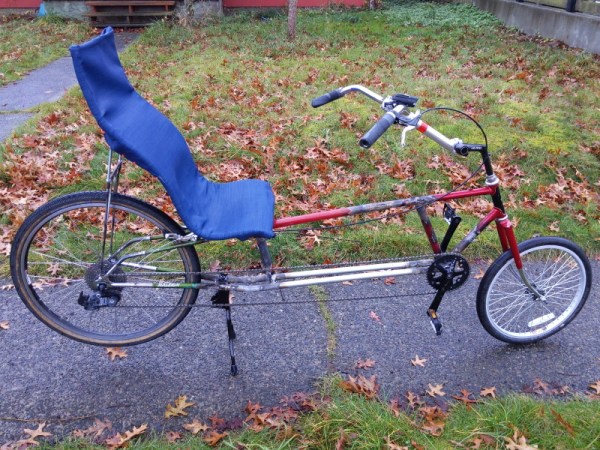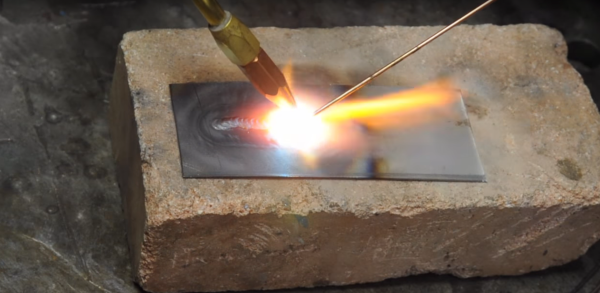‘Tis the time of the year to find as many reasons as possible to shut off the smartphone and get yourself outside. [Rich Olson’s] newest excuse is a recumbent bicycle he built from at least three donor bikes. Of course we’ve seen any number of bike mods over the years (the tall bikes that integrate a ladder to climb up to the saddle have always held a special place in our hearts), but [Rich] left us a nice trail of bread crumbs on how to get into this yourself without breaking the bank.
 He worked from a set of open source plans, with additional instructions laid out by [Brian in Ohio] in a bicycle hacking series on the Hacker Public Radio podcast. We learn in the first installment that you can get your hands on a torch that uses oxygen and MAP gas to braze the pipe joints — a quick Duck Duck Go search turns up kits that have the torch and both gases for about eighty bucks. Ask around your neighbourhood and you’re likely to find some bike frames from the disused and broken cycles lurking in dark garage corners. That first podcast page even has images that show you how to lay out fishmouth cuts where the tubes will meet.
He worked from a set of open source plans, with additional instructions laid out by [Brian in Ohio] in a bicycle hacking series on the Hacker Public Radio podcast. We learn in the first installment that you can get your hands on a torch that uses oxygen and MAP gas to braze the pipe joints — a quick Duck Duck Go search turns up kits that have the torch and both gases for about eighty bucks. Ask around your neighbourhood and you’re likely to find some bike frames from the disused and broken cycles lurking in dark garage corners. That first podcast page even has images that show you how to lay out fishmouth cuts where the tubes will meet.
But what really grabbed our attention is the tube bending for the recumbent seat. This is a speciality part that you’re not going to be able to salvage from traditional bikes. [Rich’s] project shows off this image of a bend template and the two main rails he used from the seat; but how did he make those bends? The third episode of [Brian in Ohio’s] series covers the one simple trick that electricians don’t want you to know. Those rails are made out of electrical conduit and you can easily buy/rent/borrow a commonplace conduit bending tool which has the handy advantage of including angle guides.
You’ll find [Rich’s] video after the break which begins with a slideshow and ends with a demo ride. That lets us see the lacing on the back side of the seat fabric that keeps it taught, yet comfy in a way a standard bike saddle just can’t be.
If this still hasn’t convinced you to pick up a torch, you can also build a recumbent with a wooden frame.
Continue reading “Down The Fabrication Rabbit Hole To Build A Recumbent Bike”















